After doing a little more research, I found a different way to do something like what you want using just one cell. In this method, you have just the taller cell, but return a height that only lets you see the top half of the cell unless its selected. You have to do two things in the design of your cell to make this work. First select the box for "clip subviews" in IB, so the buttons won't show outside their view (the cell). Second, make the constraints such that the buttons are all lined up vertically with each other and give one of them a vertical spacing constraint to one of the UI elements in the top of the cell. Make sure none of the buttons has a constraint to the bottom of the cell. By doing this, the buttons will maintain a fixed distance with the top elements (which should have a fixed space to the top of the cell), which will cause them to be hidden when the cell is short. To animate the change in height, all you have to do is call beginUpdates followed by endUpdates on the table view.
#import "TableController.h"
#import "TallCell.h"
@interface TableController ()
@property (strong,nonatomic) NSArray *theData;
@property (strong,nonatomic) NSIndexPath *selectedPath;
@end
@implementation TableController
- (void)viewDidLoad {
[super viewDidLoad];
[self.tableView registerNib:[UINib nibWithNibName:@"TallCell" bundle:nil] forCellReuseIdentifier:@"TallCell"];
self.theData = @[@"One",@"Two",@"Three",@"Four",@"Five",@"Six",@"Seven",@"Eight",@"Nine"];
[self.tableView reloadData];
}
- (NSInteger)tableView:(UITableView *)tableView numberOfRowsInSection:(NSInteger)section {
return self.theData.count;
}
-(CGFloat)tableView:(UITableView *)tableView heightForRowAtIndexPath:(NSIndexPath *)indexPath {
if ([indexPath isEqual:self.selectedPath]) {
return 88;
}else{
return 44;
}
}
- (UITableViewCell *)tableView:(UITableView *)tableView cellForRowAtIndexPath:(NSIndexPath *)indexPath {
TallCell *cell = [tableView dequeueReusableCellWithIdentifier:@"TallCell" forIndexPath:indexPath];
cell.label.text = self.theData[indexPath.row];
return cell;
}
#pragma mark - Table view delegate
- (void)tableView:(UITableView *)tableView didSelectRowAtIndexPath:(NSIndexPath *)indexPath {
if ([self.selectedPath isEqual:indexPath]) {
self.selectedPath = nil;
}else{
self.selectedPath = indexPath;
}
[tableView beginUpdates];
[tableView endUpdates];
}
This, I think gives you the desired animation when you pick the first cell, but you get a somewhat different animation if you then pick a cell below the currently selected one. I don't know of any way around that.
